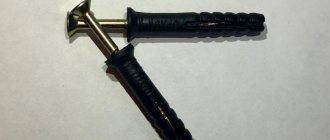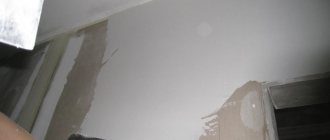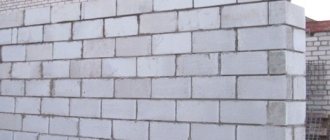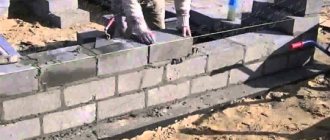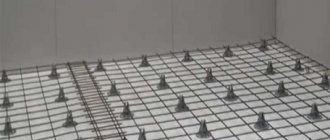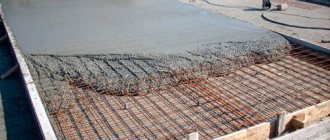Before you start finishing the walls, in most cases it is necessary to clean and perfectly level the surface. If you are planning to plaster or wallpaper your walls, you need to get rid of any nails and screws sticking out of the wall. The greatest difficulty can be caused by removing dowels, because removing a dowel from a wall without certain experience and knowledge is quite difficult.
You should not hope that you will be able to pull the dowel out of the wall with your own hands. You will definitely need to use additional construction tools. What kind of tools and improvised means you will need depends on the purpose for which you want to remove the dowel and how you will do it.
Return to content
How to remove a dowel nail?
If the dowel sticks out of the wall along with the nail, removing it will be quite simple. You will need to take a small hammer and tap the dowel nail on both sides as well as the top and bottom to loosen it in the hole. After which you will need to take pliers and sharply pull it out of the wall.
Before pulling a dowel nail out of a concrete wall, check whether such an operation will damage the top layer of plaster, which you may need in the future. As a last resort, you can simply drive the dowel and nail more tightly into the wall using a piece of metal or wood comparable in diameter to the dowel and a hammer. As a rule, the depth of the hole for the dowel is initially made slightly larger than its length. Therefore, such an operation should not cause much difficulty. To level the surface of the wall above the dowel nail, use mastic or gypsum plaster.
Return to content
How to fix a dowel in a loose wall
There are several ways to attach platbands to the wall. One of them is installation on self-tapping screws. Here you may encounter a problem such as loose walls. Especially if the house is old and the plaster is pretty worn out. And if you have started home renovations, then you cannot avoid using dowels. You will definitely need to hang cabinets, shelves, mirrors, towel hooks, curtains and much more. But what to do if the walls in the apartment are loose and it is impossible to fix dowels in them using the usual method?
Of course, this problem is very common and there are several tricks to solve it.
The most famous folk method among craftsmen is to wrap a dowel with a moistened bandage and insert it into the hole. The screw can be screwed in immediately. But hanging anything on it is allowed only after the water has completely evaporated.
|
If the wall does not crumble too much and the load is not heavy, a thick layer of ordinary cellophane will do instead of a bandage.
Another option is to cement the funnel before installing the fastening. To make the material stick better, moisten its surface with a spray bottle.
Cement can be replaced with epoxy resin or liquid nails. A pre-degreased dowel is driven into the base, and after it thickens, a screw is screwed in. You can use it only after it has completely dried.
However, these solutions are not always reliable, especially when you intend to hang an object with a large weight.
Wood is much stronger. From the block you need to cut a chop with a diameter slightly larger than a funnel. It is driven into the wall, and the dowel is screwed into it. Wood is subject to expansion, which means the fasteners will hold perfectly.
In addition, there are dowels designed specifically for loose walls. They are equipped with syringes with a special astringent composition, but the price is significantly more expensive than usual. If a large amount of work is expected, then think about the rationality of such a purchase.
An excellent reliable solution would be frame anchors (anchor nails). Anchor technology is distinguished by its particularly strong fasteners and is far removed from conventional hardware.
Also, be sure to follow the following rules:
- Always thoroughly clean the wall of foreign debris and dust.
- Before driving in the dowel, check the depth of the hole. It should be a little bit larger.
- The dowel must be completely recessed so that its entire length is used in the clutch.
- Never work with a loose wall in hammer drill mode, so as not to enlarge the funnel. Use drilling only.
- The hole for the dowel should be made at a slight angle from top to bottom, especially if heavy furniture is to be installed.
- Use only drill bits that match the thickness of the dowel. Do not try to work with old drills with a curvature, as the recess will be much larger in diameter.
Leave a request for cooperation or ask a question
How to remove a plastic dowel?
There are often cases when the nail for which the dowel was driven into the wall has long been removed, but the dowel itself remains in the wall. In this case, there are several ways to remove the dowel from the wall.
1. Perhaps the most common way to remove a dowel from a concrete wall is to find a self-tapping screw suitable for the size of the dowel, screw it into the dowel approximately 2/3 of its length, and then pull it out using pliers or any other suitable construction tool.
If you don’t have a self-tapping screw on hand, you can try to pull out the dowel using a simple hand corkscrew. In this case, the dowel is pulled out of the wall, like a cork from a bottle.
2. If the dowel does not unscrew in this way, try making several small holes around the dowel, at a minimum distance from it, and only then try to pull the dowel out of the wall. Please note that in this case you will end up with a much larger hole in diameter.
3. If you cannot remove the mounting dowel or nail from the concrete, you can, by analogy with the method described above, simply leave it in the wall. True, driving a plastic dowel deep into the wall will not be so easy. To simplify the process, use a construction knife to cut off the head of the dowel, and only then drive it deeper into the wall and putty on top.
4. If you have a drill in your house, you can try to drill out the dowel. Select a drill of the same or slightly larger diameter than the size of the dowel and simply drill it out from there. The dowel will come out of the hole as plastic shavings. The hole is then also filled with putty.
Return to content
How to fix a dowel in a loose wall? 5 ways for every taste
Probably each of us who has hung or mounted something on not very reliable, not entirely uniform surfaces has encountered such an urgent problem as how to secure a dowel in a loose wall.
Moreover, you can encounter them in houses built from a variety of materials. Stalinist buildings sometimes boast walls that appear to be made of sand. There, of course, any fastening does not hold well. Brick buildings, considered almost the strongest and most reliable, can unexpectedly make their owners happy with elements that are not entirely durable and crumble. Concrete panels sometimes resemble clay huts from the early 20th century. However, even if you are unlucky with the walls, do not refuse to carry out repairs or fastening work because of this.
And I would like to live in an apartment with decent comfort. That is, have curtains on the windows, a sufficient number of cabinets and shelves to hide your things in, and hooks in the bathroom for towels. At first glance, the problem should be solved simply: cement the hole and install the fastener. In practice, it turns out that walls don’t give up so easily. If the surface is loose, the cement solution or adhesive mixture does not adhere well to the hole. As a result, this fastener still falls out, but it is already cemented into the cork itself, which, of course, is not a high-quality solution to the problem.
How to fix a dowel in a loose wall?
There are several ways to do this, both folk ones, invented by people who found themselves in similar circumstances, and those developed by professionals who tried to solve this problem. In this article we will try to consider each of the possible ones. We hope that our advice will help you complete your tasks.
They were invented by people who were desperate to reliably strengthen a shelf (for example) on a frankly unreliable wall.
Traditional methods of dealing with loose, loose and soft surfaces are simple, cheap, proven, and most importantly, they work. One of the most budget-friendly: the dowel is wrapped in a well-wetted bandage and inserted into a hole drilled in the wall. There is no need to wait, the self-tapping screw can be screwed in immediately. But hang anything on a screw only after the liquid has evaporated. It is better to take the dowel that is recommended for brick partitions.
The cement option is also suitable
, you just need to approach it wisely. Firstly, the funnel must be moistened before covering with the solution. It is best to do this with a household spray bottle - the water will be distributed evenly and not excessively. Secondly, before installing the dowel into the standard, a screw is screwed into it, which pushes its walls apart and stabilizes the position. The fastening can be loaded with a load only after it has completely set.
Cement plug is not always able to provide you with the desired quality. But the tree will not let you down. A hole with a slightly larger diameter than you need is drilled into the base. A chopper with an even larger (but slightly!) diameter is cut from nearby wood (any board or block) and driven into the hole. A dowel is already screwed into the resulting cork - and, as always, an excellent result. Due to the natural expansion of wood, such a cork will hold firmly and will not drop the furniture element entrusted to it.
|
If the wall is not crumbling too much, you can resort to this method: a thin strip of ordinary cellophane is wound around the outside of the dowel (you can even cut it from a supermarket bag). The layer being screwed on is quite thick: it should be difficult to squeeze the dowel into the hole. The winding direction is along the thread.
In most cases, such methods of securing a dowel in a loose or loose wall save even inveterate skeptics. But if they don’t suit you, let’s move on to high-tech options.
You can immediately pay attention to special offers, or you can first use, again, artisanal (from the point of view of an advanced builder) methods.
The drilled hole is vacuumed or otherwise cleared of all small particles present. After this, the hole is filled with something affordable - epoxy or liquid nails will be just right. Dowel – we choose a metal one, but out of desperation a plastic one will do. It is degreased and driven into the base. When the putty thickens, the screw is screwed in - but what it is intended for is not hung. The final work is carried out when the composition has completely set.
Disposable Hot Melt Glue Gun
can make your life much easier if the dowel is not mounted individually - otherwise the costs will be unreasonably high. Using it is elementary, preliminary preparation is unnecessary, you can hang the shelf in just a couple of hours (although it would be wiser to wait until the morning). The hot melt hardens almost instantly, without interfering with adjusting the direction, tilt and other fastening details.
For those who don’t particularly consider money, specially designed “loose wall” dowels will be a tempting option. In the same Leroy network, they are supplied with special syringes with astringent solutions that will definitely securely bind your fasteners even to the most unreliable bases. However, they are very expensive, and if you don’t need to hang a shelf or two, but do serious installation, then you should think about the advisability of using such compositions.
When fixing external structures, it is worth remembering that fasteners also vary. And before inventing intricate ways to secure a dowel in a loose wall, you can first turn your spoiled attention to the hardware. It is quite possible that after selecting the right one, no additional tricks will be required. So “Butterfly” is suitable not only for fixing to gypsum boards. Void materials are quite willing to hold a load with its use.
What to do if there is a fragment of a nail or screw left in the dowel?
A nail or screw in a dowel sometimes breaks due to too much pressure. In this case, you will not be able to pull it out with pliers. But there is another effective way. You can take a soldering iron or a gas torch and heat the plastic dowel until it becomes soft and pliable. After this, you need to quickly pull out the dowel along with the fragment from the wall until the plastic hardens again. If you can’t pull it out the first time, the dowel can be heated again until the operation is successful.
Dismantling of dowels is required as often as their installation. Installation of cornices, fastening cable ducts, installation of plastic skirting boards - these and other tasks cannot be accomplished without the use of dowels.
Return to content
How to pull a chopstick out of the wall?
Nowadays, plastic dowels are widely used, which are considered stronger, more durable and reliable. However, some people still use wooden dowels instead of plastic dowels the old fashioned way.
The difference in dismantling plastic and wooden dowels is not so great. You can also try screwing a self-tapping screw into it and pulling it out with pliers, a nail puller, or another suitable tool at hand.
Wooden dowels
Another popular way to get rid of a wooden dowel is to break it apart and pull it out piece by piece. Using a chisel and hammer, divide the dowel along the grain into several parts, then pick out the fragments using a knife or screwdriver.
You can also try drilling out the cap using a drill. However, if the chopik was made of hard wood, this process will take quite a long time. Instead of a drill, you can use a hammer drill if you have one. However, do not overdo it, otherwise you will end up with holes in the wall that are much larger in diameter than you would like.
Return to content
How to remove a metal dowel?
Metal dowels are quite rare, because... their installation requires special equipment. Pulling out such a dowel is not an easy task, because you will not be able to destroy it with any tool. The only option is to try to carefully remove it from the wall.
If the dowel protrudes slightly from the wall, try loosening it in the hole with a hammer. As a rule, such dowels sit very firmly in the wall, and they cannot simply be pulled out of the wall.
If the dowel is almost flush with the surface of the wall, all that remains is to make several small holes at a minimum distance around the dowel, and then drag it using a nail puller or pliers. If you don't have a drill, this operation can be performed using a hammer and a punch.
If you don’t want to spoil the wall, but still need to remove the dowel from the concrete wall, then as an alternative you can consider the option presented in the video below.
Return to content
The process of driving a dowel
During construction and repair, the dowel with a self-tapping screw or dowel-nail is most in demand; they can be fastened in different materials. In order to properly fix them in the wall, ensuring high-quality fastening, certain conditions must be observed. Only at first glance it seems that driving dowels into the wall is very simple. In order not to damage the material, you must follow the rule that the dowel body should not protrude beyond the edge of the wall surface.
A hole is being drilled
- A hole is made in the wall with a hammer drill, and the diameter of the drill must match the cross-sectional size of the dowel sleeve. It is important that the depth of the hole is 0.5 cm greater than the length of the dowel.
- After the hole is made, it must be cleaned with a long object at hand. To get rid of dust, the hole can be blown out with air or, for example, cleaned with a vacuum cleaner.
- Then you need to insert the dowel body into the hole and hammer it in until the edge of the part coincides with the surface of the wall.
- After this, the self-tapping screw is screwed into the plastic base almost all the way. In the version with a nail, the latter is driven in with a hammer. The core, after entering the body of the outer shell of the part, will have a bursting effect on the base in the hole, and it will be almost impossible to pull out the dowel. To install the dowel efficiently, you need to follow all the necessary rules.
Dowel in hole
It is necessary to take into account that the core needs to be twisted, and not driven in with a hammer. Otherwise, the bushing may rupture and lose its fastening properties. This statement is only suitable for dowels whose core is a self-tapping screw. The nail must be driven in with a hammer until it stops.
